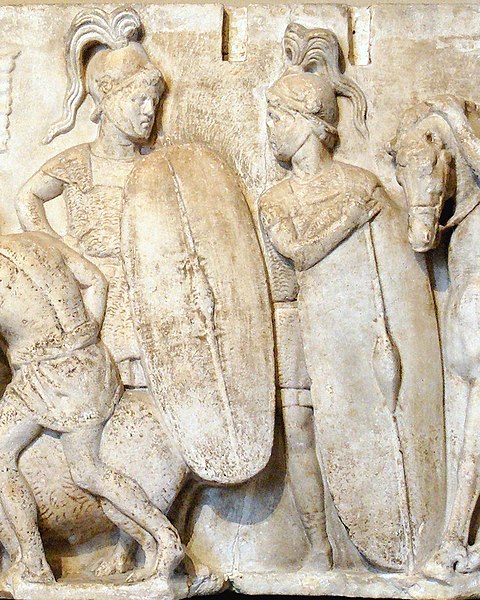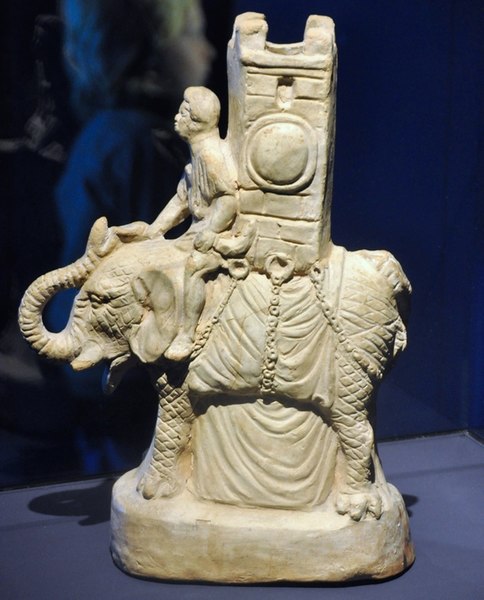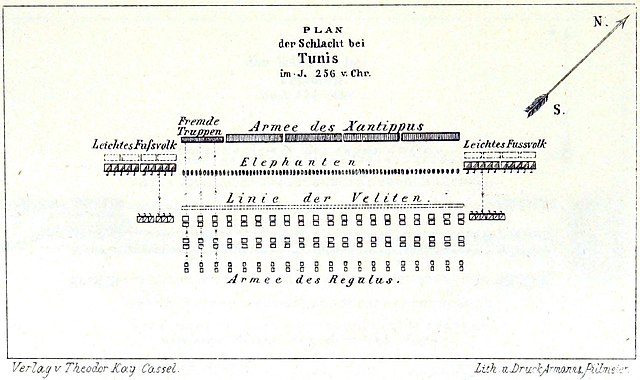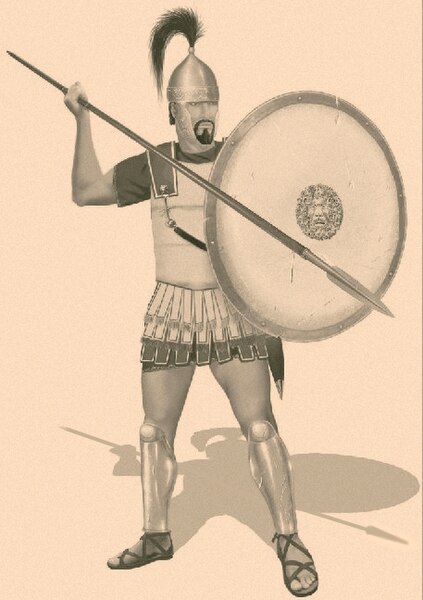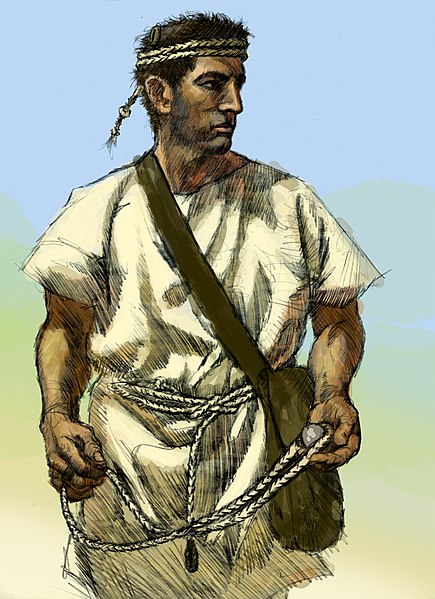Battle of the Bagradas River (255 BC)
The Battle of the Bagradas River, also known as the Battle of Tunis, was a victory by a Carthaginian army led by Xanthippus over a Roman army led by Marcus Atilius Regulus in the spring of 255 BC, nine years into the First Punic War. The previous year, the newly constructed Roman navy established naval superiority over Carthage. The Romans used this advantage to invade Carthage's homeland, which roughly aligned with modern-day Tunisia in North Africa. After landing on the Cape Bon Peninsula and conducting a successful campaign, the fleet returned to Sicily, leaving Regulus with 15,500 men to hold the lodgement in Africa over the winter.
Polybius – "a remarkably well-informed, industrious, and insightful historian".
Detail from the Ahenobarbus relief showing two Roman foot-soldiers from the second century BC
Roman statuette of a war elephant, recovered from Pompeii
A plan of the battle: Carthaginians at top, Romans at bottom and elephants in the middle
The military of Carthage was one of the largest military forces in the ancient world. Although Carthage's navy was always its main military force, the army acquired a key role in the spread of Carthaginian power over the native peoples of northern Africa and southern Iberian Peninsula from the 6th century BC and the 3rd century BC. Carthage's military also allowed it to expand into Sardinia and the Balearic Islands. This expansion transformed the military from a body of citizen-soldiers into a multinational force composed of a combination of allies, citizens and foreign mercenary units.
A recreation of a Carthaginian military unit
Citizen soldiers of Carthage on parade, as envisaged by Georges Rochegrosse
Carthaginian hoplite (Sacred Band, end of the 4th century BC)
Balearic slingers.


